Falmouth Golf Club - Serving his Pennance!

This new site was also short lived due to the outbreak of the Great War when the military took over the course for training. This caused so much damage that the membership needed to look again for a site, which brought them to Pennance.
This, again, started out as a 9-hole course but, in the late 1930s, more land became available and an extension to the course was opened at Easter 1935. In 1940, the course was again requisitioned by the MOD and all golf was to cease until after the war. From 1950 it has continued to be at Pennance where it has had three owners to date.
When golf professional, Bryan Patterson, took over the ownership he decided to make the course far more challenging. He instigated a tree and shrub planting scheme, whilst new tees were built to increase the length. There was reshaping of the fairways and new bunkers and hazards created, with redundant bunkers being filled in.
In recent years, the club has been under the ownership of David Hughes who has improved the playing conditions with substantial investment on the course. The greenkeeping team are currently in the process of constructing several new holes on land purchased, with a new clubhouse and houses to be built in the very near future. The new holes will be opened this July.

"I achieved City and Guilds in Horticulture whilst on YTS and then did my NVQ Levels 2 and 3 in Greenkeeping at Duchy College. I also have certificates in cylinder grinding, chainsaw, strimming, first aid and manual handling," he continues.
It was his qualifications and twenty-one years experience that landed him the Head Greenkeeper's position at Falmouth some six and a half years ago.
"It's not a long course, at just 5903 yards (par 72) and, up until recently, covered a total of 100 acres, but we recently purchased an additional twenty acres where the new holes have been built."
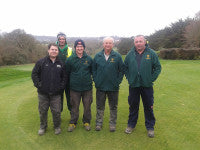
Ninety-nine percent of maintenance and servicing is undertaken in-house by Mechanic/greenkeeper, Shaun Cuffin (22), who joined the team two years ago after completing his apprenticeship. "Shaun has just passed his qualification in Land Based Engineering," confirms Simon, "but spends as much time on the course as he does in the workshop. He has made a big difference to us. He has been able to service all machines and complete several repairs that have been required, saving me from having to spend time doing it. If there are jobs that he cannot do, we will employ a mechanic to come in to do them and I'll ask Shaun to watch and learn what is happening so it will help him in the future."
Falmouth Golf Club can best be described as 'clifftop with some parkland holes'. "Due to its clifftop position the course can be windy at times," says Simon, "but, on a lovely summer's day, there is nowhere else I'd rather be."

"The greens are clay based push up and the tees have all been constructed using native soils and materials. The new greens have been constructed with a rootzone which uses our topdressing sand. They have herringbone drainage systems and the sward has been created using hollow cores from our current greens which was overseeded with two cultivars of Browntop Bent."
"Our maintenance techniques are nothing more than 'the usual' for clay based greens; lots of aeration and topdressings of sand. We have tried to construct the new greens so that they are not too dissimilar to our others, so there isn't too much difference in our feeding and watering regimes. A

"During the winter, the bottom four greens sometimes become wet, but we are lucky that we can open the cliff holes to get people out playing. This has helped us this winter immensely. These four greens are also the holes where the frost sticks around for the longest; we tend to start golfers on the 12th hole so these are the latest that get played on."
Simon explains that he uses temporary 'frost greens' on days when the greens are frozen, but this winter, due to the excessive rainfall, he used them on some of the holes, complete with bucket cups, to try to get the members out on the course and playing. "We don't do any maintenance to these temporaries other than cutting them throughout the year as we find that, during the winter months when we have days that we have to close, it is usually the areas around the tees and greens that are the problem and not the greens themselves."
"Our 8th green suffers from shade throughout the winter due to having a very large tree at the back of it, but this will be one of the greens that will go when the new ones are brought into play. We feel we'd prefer to leave the tree as it is, rather than remove any limbs that won't pose a problem in the future."

"At present, we are planting 5,000 new trees on the two new holes. We applied weedkiller and rotavated the areas that were designated for the trees and, until last week [10th March], I thought that I had made a big mistake as the ground was so wet we couldn't walk on it, let alone plant trees, but the weather gods have been kind and it has now dried out perfectly for planting."
"To get the new greens up and running in July will require topdressing throughout the spring. We also have to complete the bunkers. These have already been excavated and drains put in, but still require final preparations before the sand goes in."

"Over the last couple of years, we have removed about one hundred, low growing, palm like New Zealand flax plants that we had around the course. When these were planted, there was not a lot of money to spare and Keith blagged plants from members to help define fairways - and these were what he was given in abundance! When I arrived at Falmouth, I felt that they were not really what the golf course needed and planted more indigenous trees in place of them. I'm sure they look very nice in a formal garden, or on the seafront at Torquay, but the leaves used to cause havoc with the mowers and, if a ball were to go into them, it would never be seen again!"
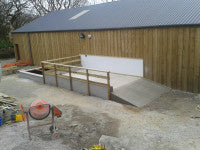
"Having looked at the price of purchasing a washdown area, I decided that we could do something similar ourselves for a fraction of the cost. It has taken a fair bit of planning, but I'm hopeful it will serve us well in the future."
With so much work going on around the course, I ask Simon if this has impacted on presentation. "No," is Simon's short answer. "Presentation ranks very highly with us. I like to think that we try to make the course look and play as good as we can, whether it be Ladies Day or a Friday afternoon roll up. Although, we did struggle to maintain the bunkers through, what seemed, an endless wet winter. In our fixture list, we have just over twenty days free from 1st April to 31st August when there isn't some kind of competition or another. It is sometimes difficult, but the 8.00am, 1st tee start helps us."
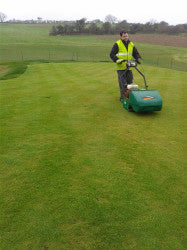
"We find that, being so far down the country, the haulage costs for getting topdressings and other supplies are very high so, as a result, we perhaps don't put down as much as I would like throughout the year," bemoans Simon.
Where general course maintenance is concerned, Simon explains that they cut the greens at 4mm in the summer with Toro 3250 ride on mowers. "We find that, due to the undulations in the greens, we cannot go any lower than this. We go up to 5mm in the winter, but find that, due to the mild climate we have, we can still be cutting them twice a week in December."
"We try to verticut the greens every fortnight throughout the season, if competitions and conditions allow."
"The tees are cut twice a week at 12mm with our old greens mower, a Jacobsen GPLEX III in the summer. We find that, with very small tees, this mower doesn't damage the playing surface as much when turning sharply. We use tee mats in the winter when growth slows. There is no specific time we start and finish using these, it is just when conditions don't allow us to use the grass tees."

"We have a Jacobsen Tri-King that we are going to use this year to cut a band of semi-rough around the fairways at 25mm."
"The rough is cut at 75mm with our Jacobsen AR 522 and has to be cut once a week during the growing season, which can last up to eight months!"
"We have now purchased a new Wiedenmann Terraspike XP which allows us to do more aeration. We usually solid tine and slit the fairways throughout the winter."

"My staff are trained to use all machines and do all tasks. This works well for us as it gives us variety and helps with holiday periods etc."
Where irrigation is concerned, Simon explains that he has a somewhat antiquated system. "We have standpipes at every green for irrigation, if required, but due to the age of the pipework, which was put in during the 1950s by the members, plus the lack of pressure, we use our bowser to water the greens, although we are in the early stages of a rolling programme to provide new irrigation to all 18 holes. The water that goes onto the course comes from our borehole that fills a 90,000 litre tank at our greenkeeping compound. It normally takes one man around four hours to water the greens. We are lucky that, because the club uses tee times and everyone starts at the first tee from 8.00am, we can keep ahead of golfers and don't normally get in their way - or them in ours!!" he states, with a smile.
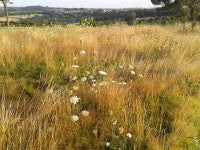
"Whilst we don't currently have a written environmental policy in place, we have worked with local environment agencies before and during the construction of the new holes, where extensive surveys were carried out to see what wildlife existed already on the site. This meant that the new development was built sympathetically to current residents and that the 5,000 newly planted trees and wildflower areas were included to encourage more wildlife."
"We have around twenty bird boxes around the course at present and I would like to put up several more. More wildflower areas have been seeded this year and we have also devoted one area to flower this summer just as poppies to commemorate World War One."

The BIGGA SSMS has been invaluable to me whilst I have been doing this. I also went on a training course locally to help me fully understand Health and Safety and to gain a qualification."
Machinery is purchased outright. "We try to buy through local dealerships, if the price is right but, with the way the economic market is, I will try to source the product cheaper if I can. I did go to Sussex to purchase a fairway mower! And I don't stick to just one manufacturer as I feel each have their own good and not so good products. Also budget restraints do come into the equation."
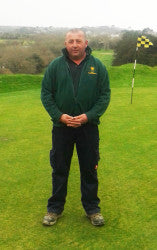
"We hire machinery on a needs must basis. We hired the Graden Swing Wing to use on the greens during our spring 2012 maintenance week, but we didn't last year due to the greens being so wet. We have also hired mini excavators to renovate bunkers, but we won't have to do that anymore because we should be getting our own in the next few weeks."
As for a wish list, Simon says he would really like to have four pedestrian greens mowers. "Having been brought up on hand mowing at Tehidy Park, the finish you get is second to none," he enthuses.
As we conclude our discussions, Simon comments that, as an industry we are far better respected now than we were when he started his career. "Hopefully, the days are long gone when staff members were frowned upon for going into the clubhouse."
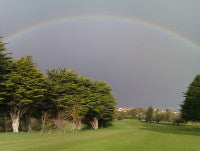
"I think that the commentators at these televised tournaments could do a lot more for the industry by explaining things. For example, by comparing the budgets of a top course that is holding a Major compared to your average club."
